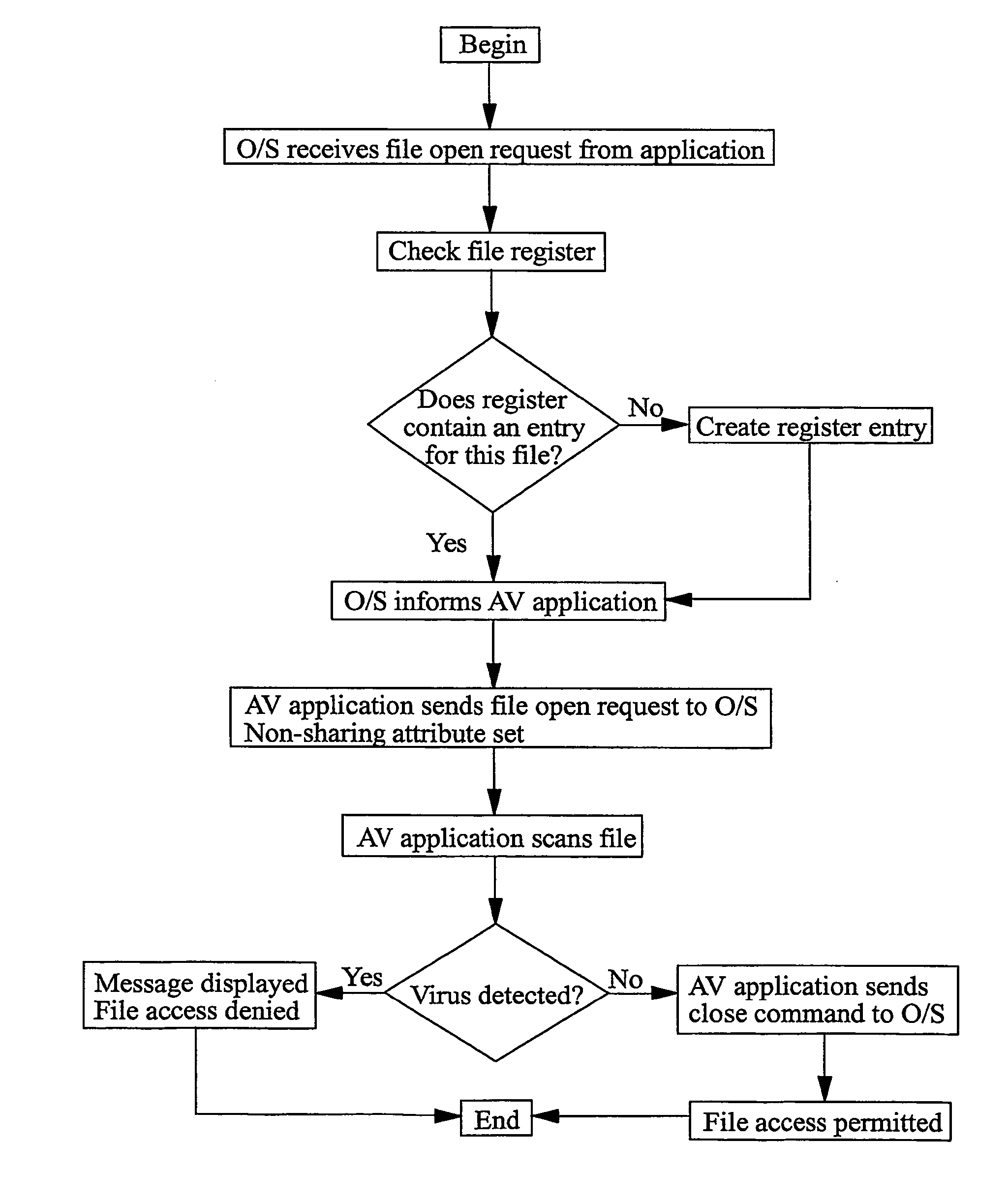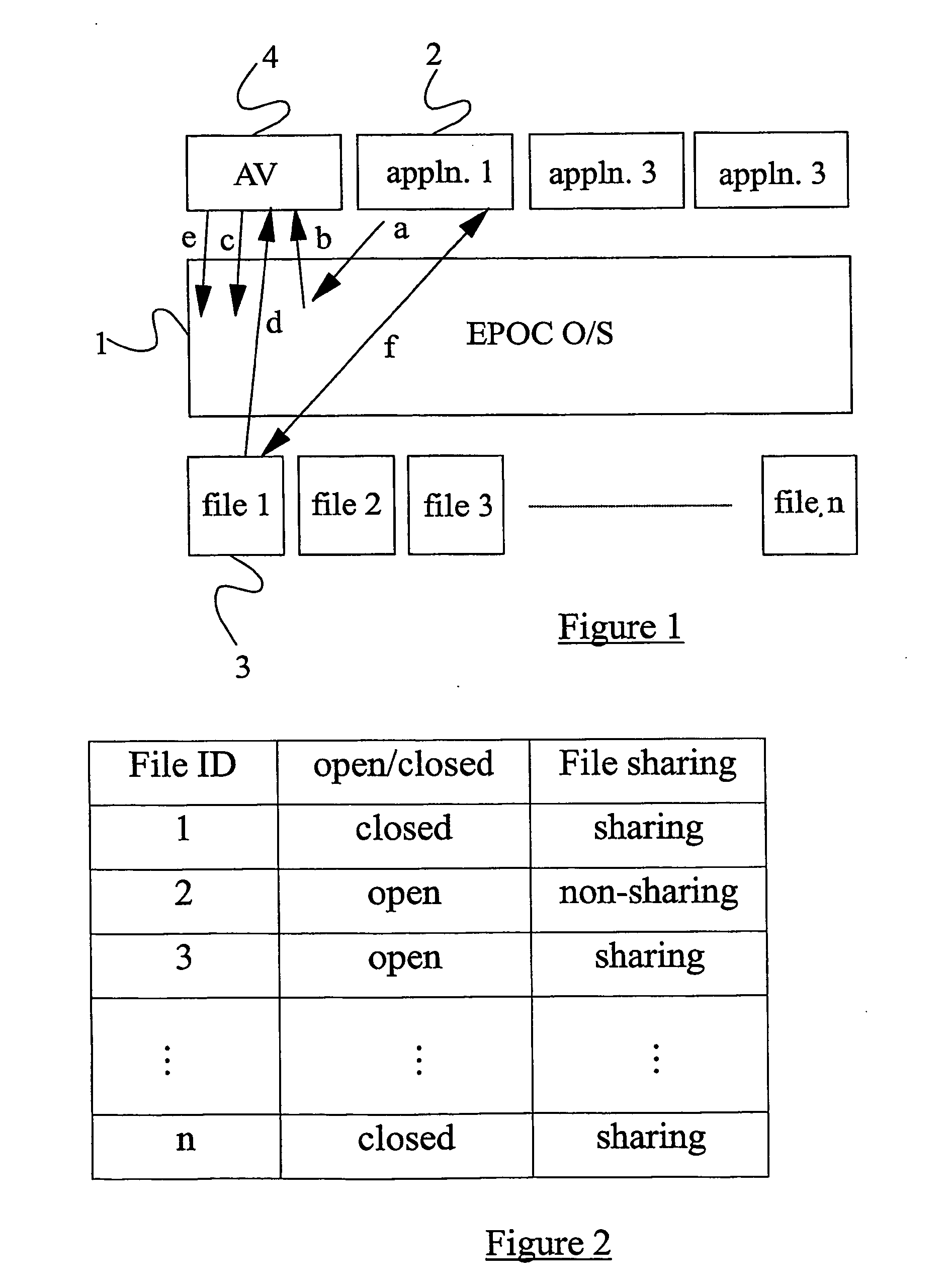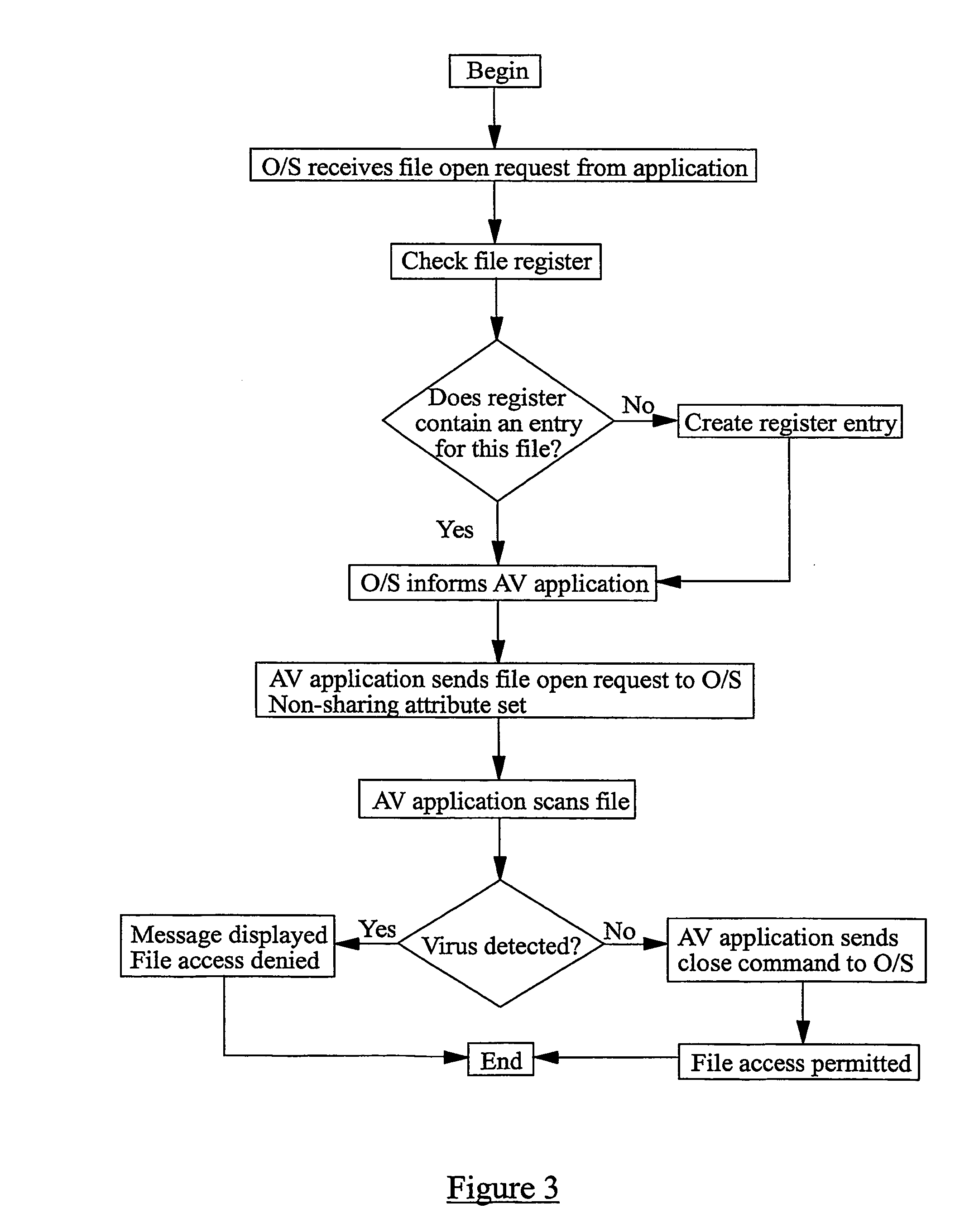Preventing virus infection in a computer system
a computer system and virus technology, applied in the field of virus infection prevention in the computer system, can solve the problems of virus triggering, many millions of pounds worth of damage in terms of data loss and working time loss, and the virus infection of the computer and the computer system is a growing problem, and achieves the effect of simple and elegan
- Summary
- Abstract
- Description
- Claims
- Application Information
AI Technical Summary
Benefits of technology
Problems solved by technology
Method used
Image
Examples
Embodiment Construction
The example which will now be described relates to a mobile computer device such as a mobile telephone, communicator, PDA or similar mobile device which uses the Symbian™ operating system (O / S) developed by Symbian. Symbian has been specifically designed for mobile computing platforms. FIG. 1 illustrates how the Symbian O / S 1 interacts with applications 2 such as the Sheet and Calendar applications, to enable the applications to access files 3 which may be data files or program files. Both the applications and the files may be stored in a common device memory.
The operating system 1 may for example maintain a file register in which are recorded the identities of previously accessed files. This register is illustrated in FIG. 2. For each file the register records whether the file is currently open and whether the file is in a sharing or a non-sharing state. In a sharing state, a file may be accessed simultaneously by two or more applications and / or a single application may make mul...
PUM
 Login to View More
Login to View More Abstract
Description
Claims
Application Information
 Login to View More
Login to View More - R&D
- Intellectual Property
- Life Sciences
- Materials
- Tech Scout
- Unparalleled Data Quality
- Higher Quality Content
- 60% Fewer Hallucinations
Browse by: Latest US Patents, China's latest patents, Technical Efficacy Thesaurus, Application Domain, Technology Topic, Popular Technical Reports.
© 2025 PatSnap. All rights reserved.Legal|Privacy policy|Modern Slavery Act Transparency Statement|Sitemap|About US| Contact US: help@patsnap.com



